
“America” headed east Tuesday with a group of Chinese American history buffs, ready to pursue stories more than a century old from the Oregon hills.
Actually, the country itself was not moving on the highway.
The name sat on top of the chartered blue bus that left the Wing Luke Museum in Seattle and made its way east on Interstate 90, as the 2010 Chinese Heritage Tour of the American West - the moving part of it, that is - began.
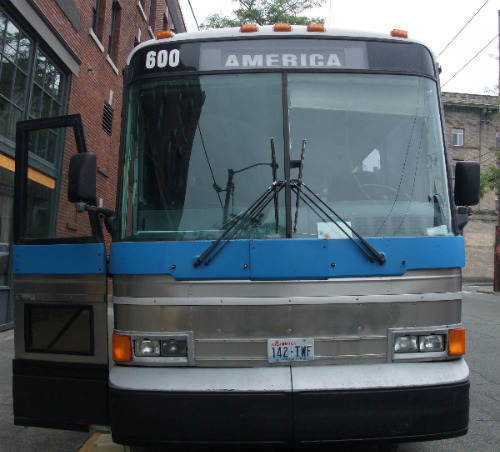
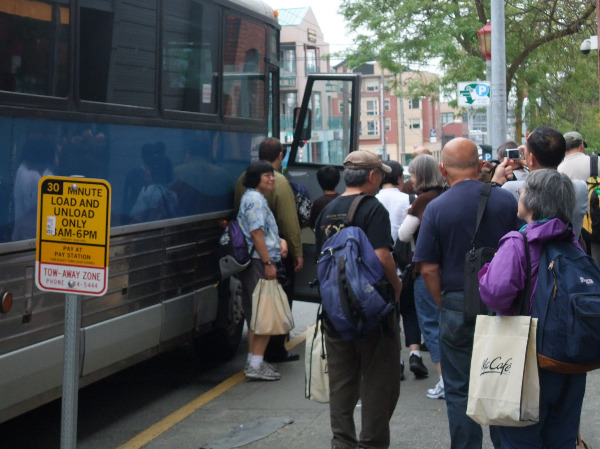

The wheels of “America” began rolling at 10:23 a.m.
The day’s destination was John Day, Ore., where the tour on Wednesday would visit the Kam Wah Chung State Heritage Site. The site is where in the 19th century two Chinese immigrants – Ing “Doc” Hay and Lung On – ran a general store, herb doctor’s office and social gathering place.
In 1882, about 1,000 Chinese immigrants were working in and around John Day, said Dale Hom, USDA Forest Service supervisor who helped coordinate the trip. Many, if not most of, the Chinese pioneers had arrived to find a better fortune – in the form of gold, to be precise.
Today, the mountainous town, which sits about 3,000 feet in elevation in Eastern Oregon, has about 1,600 residents.
Near Snoqualmie Pass, inside “America,” sitting in a gray cloth-covered seat was Lucky Owyang, a 64-year-old from Marysville, Calif. He believes that history should include stories from all groups in the United States.
“A lot of the Chinese involvement isn’t documented,” he said, snapping digital pictures of the scenery.
“I’m interested in learning what I can and bringing it to the consciousness of unknowing people. Five thousand years of history. It just wasn’t the Romans.”
Earlier in the day, participants gathered inside The Wing’s community hall in the East Kong Yick Building in Seattle – a structure that once held import-export stores, over 100 boarding rooms and various family apartments for Chinese immigrants who had landed in Seattle.
The East Kong Yick Building houses the entire museum.
“We’re starting at an ending point,” Cassie Chinn, museum deputy director, told the participants.
To give historic context of Chinese in the United States during the 19th century, she told them the country only had 325 people of Chinese ancestry during the 1848 to 1851 period.
By 1852, though, the country had about 20,000 people of Chinese ancestry, she said, citing information from historian Liping Zhu.
The main reasons for the increase around this time, she said: Mining, especially in the West, and the need for labor to build the railroads.
Over the years, Chinese lived, worked, raised families and invested in Seattle. The East Kong Yick Building, Chinn added, was a place where many members of the second generation of Chinese lived or called a temporary home.
Before they boarded “America,” the trip participants toured the East Kong Yick Building and saw rooms where ordinary immigrants slept and a meeting area where community leaders would gather.
Jennie Ly, a Wing Luke staff member gave the participants a tour and explained that many of the Chinese immigrants who stayed at the East Kong Yick Building tried to save enough money.
If they did, she said, they would move to Rainier Valley or Beacon Hill – two South Seattle neighborhoods – and continue on with their lives.
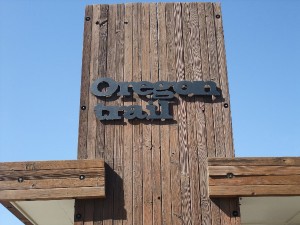
By the afternoon, ”America” traveled on the Oregon Trail - a major path in which Chinese and European travelers likely passed each other during the frontier days, Hom said.
Inside the bus, people introduced themselves to one another. Some talked about growing up in Seattle, heard stories about Chinese settlers in the West – including a cowboy.
Some studied the tour’s travel notes, which give outlines of the places on the tour. A few slept as the bright sun prompted some participants to tape a map against the window to block the glare.
By 7:41 p.m., with the sun making for a warm afternoon, ”America” had arrived and stopped on John Day soil.
The curious tour participants were still on board. Hunger, though, had worked its way on their stomachs and minds.
The driver of “America” pulled into the parking lot of The Snaffle Bit Dinner House.
Participants hopped out, stretched their legs and posed for photographs.
Within minutes inside the restaurant with horse photographs, plates of chicken and ribs – with baked potatoes with sour cream – appeared on the tables. There were salads, too.
The sign outside the restaurant was fitting: Yes, what a way to end the day.
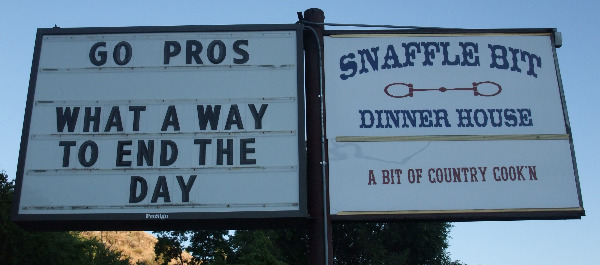

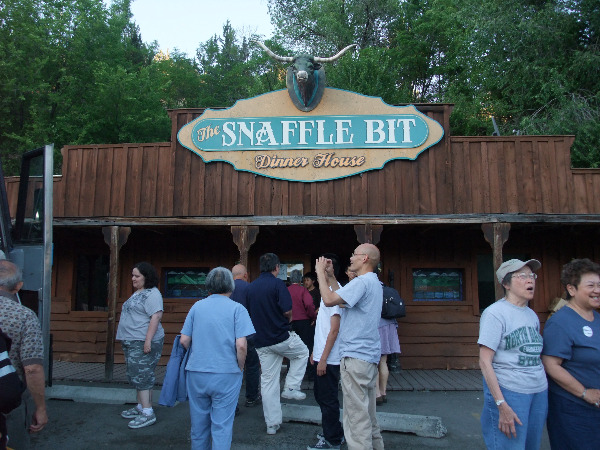
Comments
Leave a comment Trackback